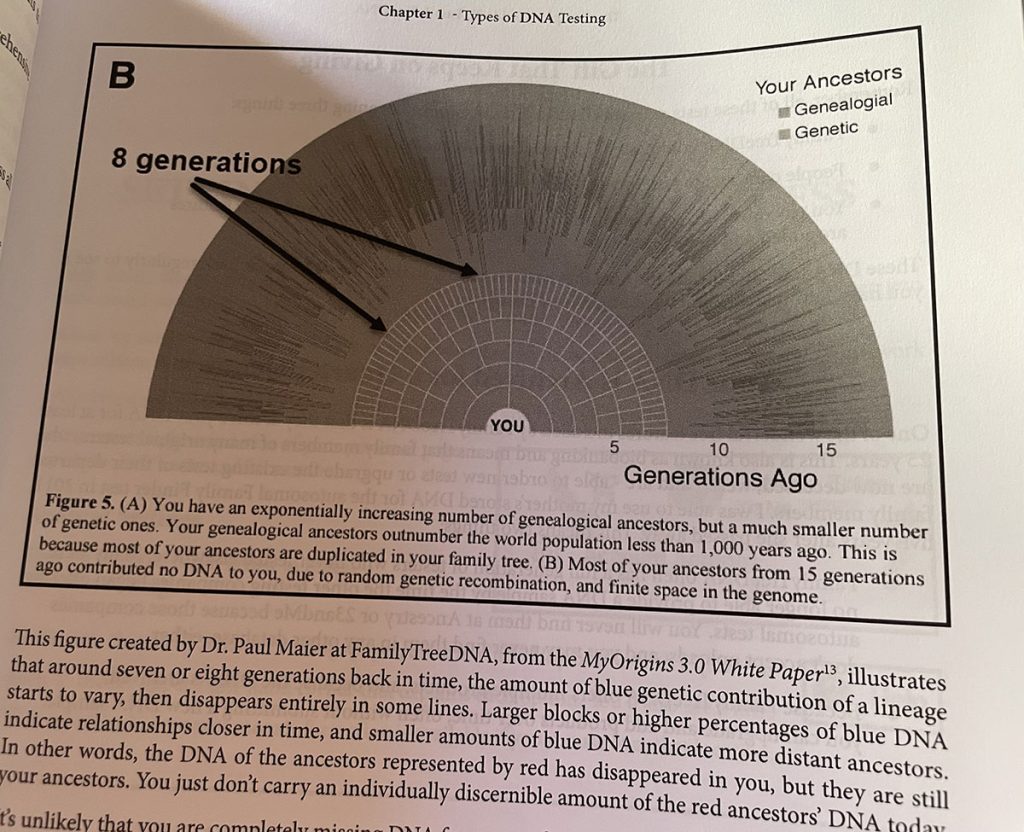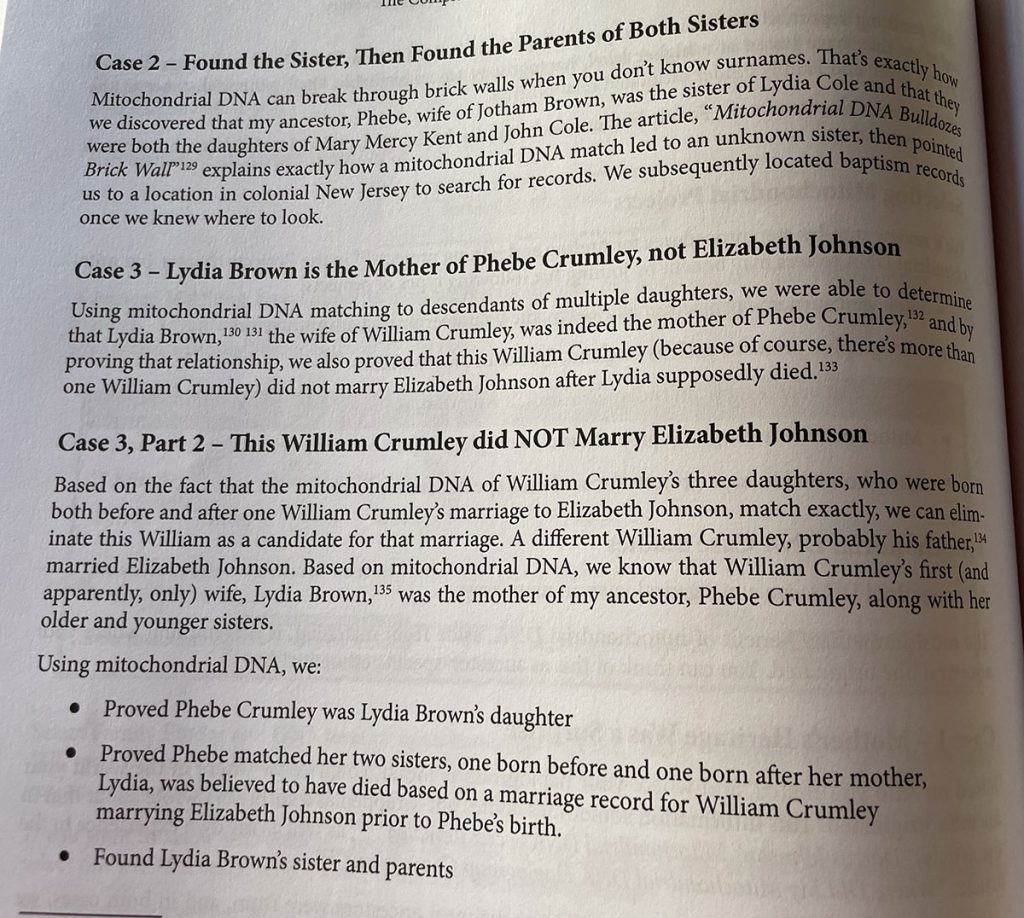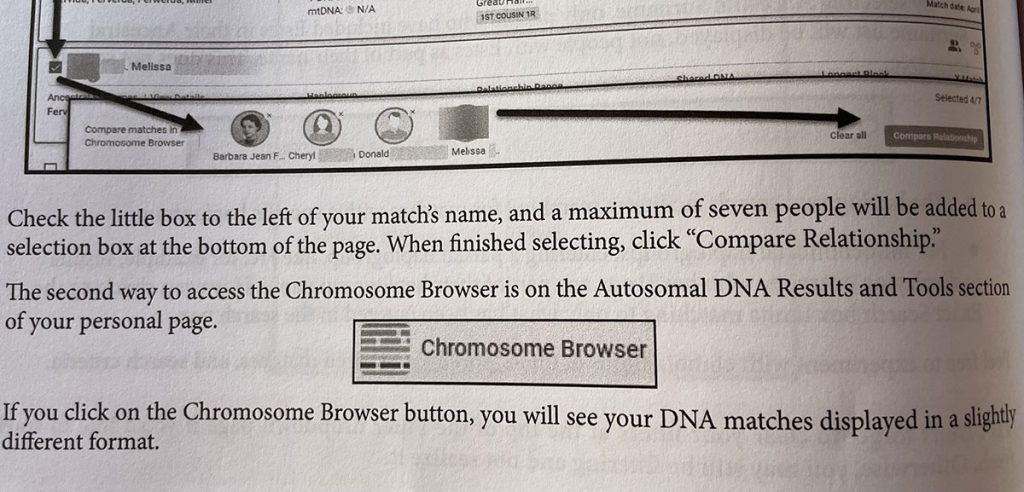New books in the genetic genealogy field do not come along that often. As well as autosomal, I’ve taken both Y- and mitochondrial (mt) DNA tests, but I feel less confident when working with them. This book (full title The Complete Guide to FamilyTreeDNA: Y-DNA, Mitochondrial, Autosomal and X-DNA) is therefore very welcome.
The author
Roberta Estes will be well known to most readers as the prolific author of the DNAeXplained blog. DNAeXplained was among the resources I turned to as I took my first steps into the world of DNA back in 2016. Roberta was a very early adopter of genetic genealogy and a very early customer of FamilyTreeDNA (FTDNA).
FamilyTreeDNA vs. other companies
While there are companies with larger databases of autosomal testers, FamilyTreeDNA occupies a unique position in the industry. Not only were they the first company to offer genetic testing for genealogists, but they are also the only company currently offering Y- and mitochondrial as well as autosomal DNA tests.
The book
There are 247 large pages in total. My physical copy has black and white illustrations, while the electronic book has these in colour. There are several instances where the text references colours, but the graphic is in black and white.

Structure
The book starts with a brief history of the field and some definitions of the different types of DNA. The author then notes some of the key unique selling points of FamilyTreeDNA. Most notably:
- Since they have been selling tests since 2000, FTDNA will have some older testers who are not on any other testing sites
- DNA samples are archived so that you can purchase further tests using the original sample
Roberta then provides lots of detail about the account section. This provides a useful reminder of the importance of details like adding surnames, earliest known ancestor/location and account beneficiary.

Most of the book then focuses on both general and FTDNA-specific information about Y-, mt and autosomal DNA tests. Each of these chapters has a similar broad structure:
- Goals – why you might take this test, and a brief scientific overview.
- The FamilyTreeDNA interface and available tools and features for this test
- Analysis tips specific to this type of DNA test
- The Y- and mtDNA chapters also feature some specific case studies
In the remainder of the book, the author covers the X chromosome, the myOrigins ethnicity estimate, projects, and third-party tools. Finally, there’s a concise step-by-step roadmap with suggested steps to maximize what you can discover with your DNA tests.
Y-DNA
Y-DNA was the first test offered by FamilyTreeDNA, so unsurprisingly the author devotes a lot of space to it. Writing about Y-DNA is a challenge: many genealogists lack experience with it, but it can get technical very quickly with a wide variety of terms and available tools.
The author doesn’t shy away from technical detail, but introduces terms gradually in the context of what you see on-screen in your test results. I’ll admit that I do occasionally find this a bit dry (for example information about ‘reads’). But you can find some fascinating content ‘down in the weeds,’ as Roberta describes the sections where she covers something at a “painful level of detail” (!)

Overall, there is something of a firehose of information, with lots of useful advice. For example, while the big-Y 700 test has clear advantages over the ‘old’ single tandem repeat (STR) tests, if your initial goal is just to establish whether or not you might be related, a 37-marker test will suffice. You can upgrade these less expensive tests later if required. I was also able to gain more insight into the additional benefits of SNP testing on the Y-chromosome.
The background (with screenshots) of all the latest tools is very thorough, and includes some features I wasn’t previously aware of such as Globetrekker.
Mitochondrial DNA
The author is no less passionate about mitochondrial DNA, and reading this chapter certainly enhanced my understanding of the topic. At the same time, there are points where the content is very scientific, and I start to struggle to connect it to my work as a genealogist! This and the previous chapter might bear reading a few times in order to cement this information in my brain.
Again, there is a step-by-step look at the FamilyTreeDNA dashboard for mtDNA, with screenshots for every option. The “mitochondrially uncertain” like me will be grateful for the four case studies at the end. These provide concise examples of cases where mtDNA helped with a genealogical dilemma, with links to full case studies on the author’s blog.

Autosomal DNA (Family Finder test)
As we enter what for me is more familiar territory, there’s a reminder that FTDNA accepts uploads of autosomal tests from other vendors. The author also highlights the facility to link matches to your tree and then use this information to assign other matches who share the same piece of DNA to maternal and paternal sides. As if to remind us that books about websites can go out of date quite quickly, this process has now been updated following FTDNA’s integration with MyHeritage for family trees!
There is then a detailed discussion of the chromosome browser and how you can use identified matches to help figure out other segments.

Of the remaining chapters, the one on projects is possibly the most useful, since it highlights FTDNA’s important collaboration features. There’s also a chapter on third-party tools that discusses Genetic Affairs and DNA Painter, although strangely I could find no mention anywhere in the book of mitoYDNA.org. The glossary at the end is a particularly helpful for decoding specific FamilyTreeDNA features.
Summary
In summary, if you’ve tested or plan to test at FamilyTreeDNA, you’ll find this a very useful reference. Based on how the book mentions colours that only exist in the electronic version, I think I’d recommend the ebook over the hard copy. Another reason to choose the electronic version would be the many links in the footnotes, which will then be clickable!
The practical case studies on how the different tests can help you answer genealogical questions are very helpful. Any additional ways we can narrow down and/or eliminate hypotheses and lines of enquiry are welcome, and this book explains them well.
Overall, I found myself feeling slightly jealous of those who are able to draw interesting conclusions from their Y-DNA. My own paternal line is via my Jewish grandfather. Since Jews in Prussia only tended to adopt surnames around the late 18th century, my test has not so far produced much for me to get my teeth into. However, I now feel better equipped to delve into the deeper ancestral information provided by my Big Y test and will now approach my mtDNA results with renewed confidence.
The book is available direct from the publisher and also at other retailers including Amazon.
Contact info: @dnapainter.bsky.social / jonny@dnapainter.com
